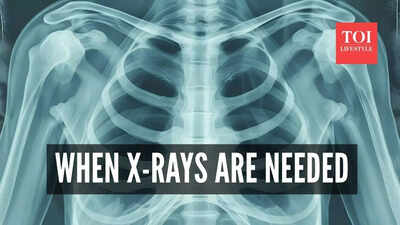ARTICLE AD BOX

Chest X-rays have become a common practice these days, whether it is for routine check-ups or for the medical examination of a new job. But are these screenings actually healthy or do they carry hidden dangers? Top neurologist Dr. Sudhir Kumar, recently highlighted this issue in one of his X posts, and emphasized the need for caution when it comes to routine chest X-rays.
According to the neurologist, who’s currently practicing at Apollo Hospitals, most individuals do not require annual chest X-rays unless there is a strong medical reason to take one. Dr. Kumar asserted that smart health is not about more tests, it’s about the right ones.
Are chest X-rays harmful?

Medical imaging, including chest X‑rays, exposes the body to ionizing radiation, which has the potential to damage DNA. Harvard Health review inclines with Dr. Kumar’s viewpoint. According to Harvard Healthstandard chest X‑ray delivers a very small dose of radiation, typically around 0.1 mSv, which is far lower than higher-intensity scans like CTs.
Although the risk from a single X‑ray is extremely low for healthy adults, repeated imaging over time can accumulate and slightly increase the lifetime risk of developing cancer. Harvard emphasizes that even small doses should not be taken lightly, and radiation exposure should always be justified by clinical need.Taken together, these insights highlight a simple principle: chest X‑rays are safe when used judiciously.
Dr. Kumar adds in his post that chest X-rays should only be considered when there are valid medical indicators present.
When are chest X-rays actually needed?

Experts and guidelines emphasize that chest X-rays should be used selectively, based on clinical need. According to Dr. Sudhir Kumar, chest X‑rays should only be considered when there are clear medical indicators, such as:
- Persistent or unexplained cough
- Unexplained weight loss
- Fever or signs of infection
- Occupational exposure to harmful substances
- suspected lung or heart conditions
Research and guideline-backed evidence supports this selective approach:The American College of Radiology(ACR) rates routine chest X-rays for asymptomatic hospital admissions or preoperative screening in healthy patients as “Usually Not Appropriate.” A large Ontario studyfound that only around 1.2% of chest X-rays in low-risk, asymptomatic outpatients detected a major abnormality, and almost all findings required no treatment.Another study conducted on more than 50,000 asymptomatic individuals found only 3.1% had pulmonary lesions, highlighting the low yield of routine imaging in healthy populations.In short, chest X-rays should be reserved for those with symptoms, risk factors, or relevant medical history, not as a blanket annual test.
This approach minimizes unnecessary radiation exposure while ensuring that those who need imaging get it.
- A chest X-ray should be taken for a persistent cough, lasting more than 8 weeks, as per The American College of Radiology.
- Chest X-ray should be taken if an individual is occupationally exposed to harmful substances. The X-ray is used for the screening or surveillance of lung disease.
- The ACR also asserts chest X-rays can be done for diagnosing acute respiratory illness (when there are complications or suspected pneumonia).
Disclaimer: This article is for informational purposes only and is not a substitute for professional medical advice. Always consult a qualified healthcare provider for diagnosis, treatment, or guidance regarding any medical condition or before undergoing any medical test, including chest X-rays. Individual needs may vary, and medical decisions should be based on a healthcare professional’s evaluation.

 1 hour ago
5
1 hour ago
5









 English (US) ·
English (US) ·